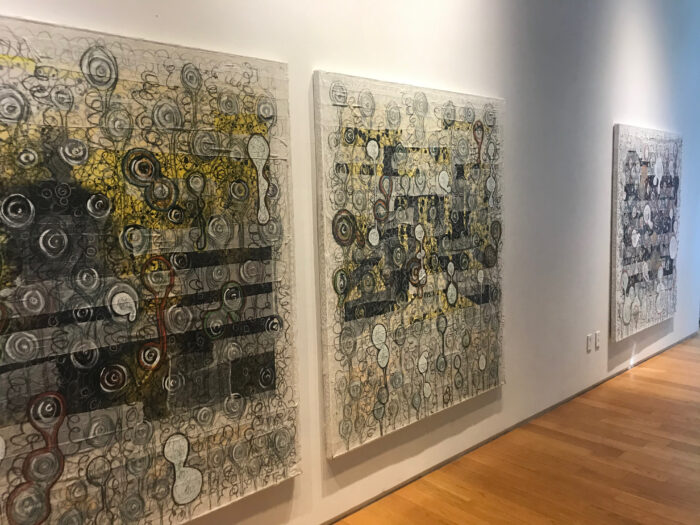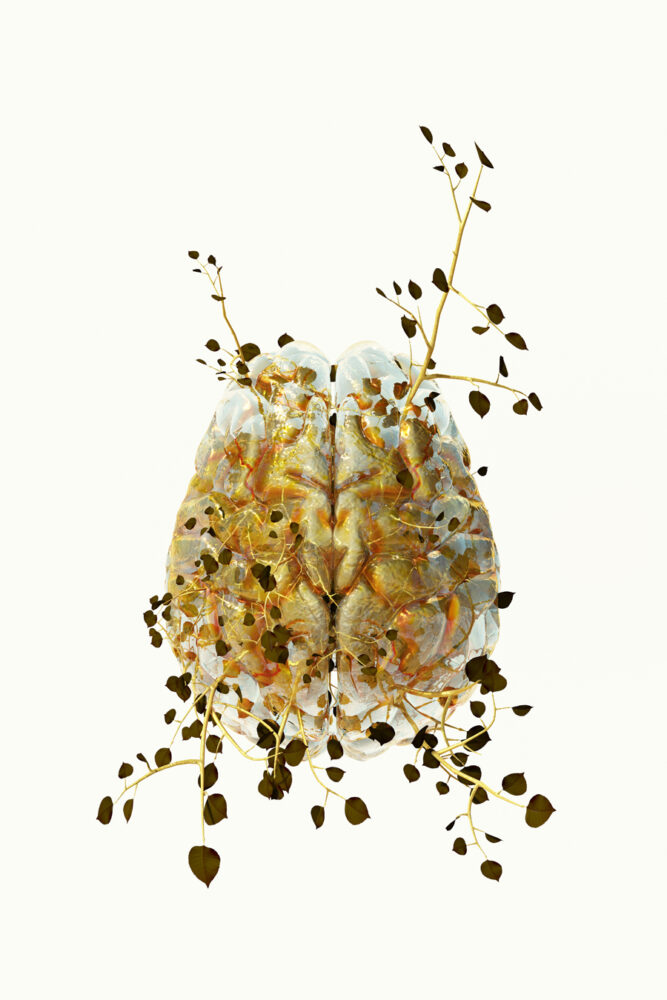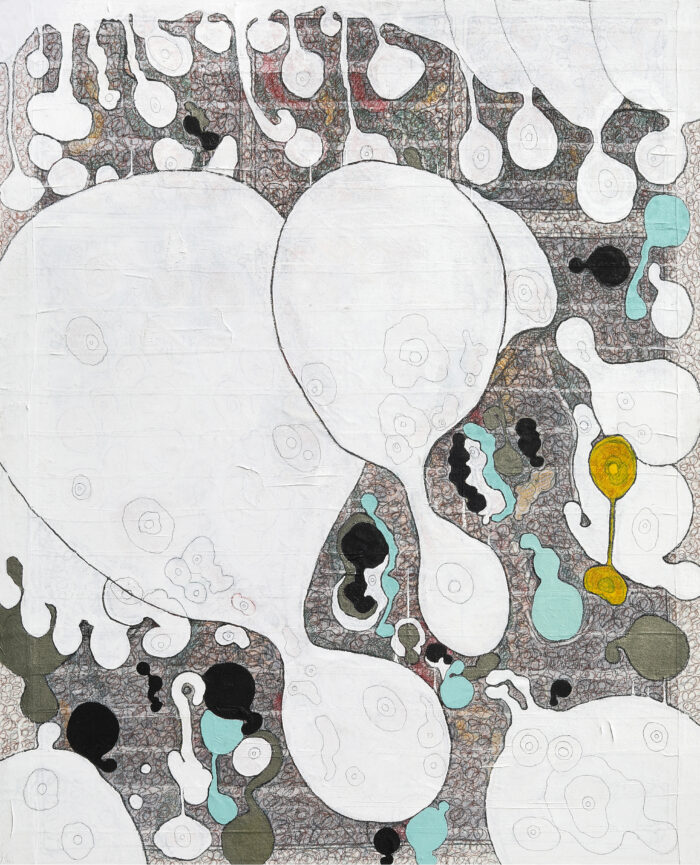
Costas Picadas
Biomes and Homologies
Tenri Cultural Institute
Curated by Dr. Thalia Vrachopoulos
May 5-31, 2023
Costas Picadas creates art that heals. He aims high, longing to bridge art and science as Leonardo DaVinci did. He believes in art that connects us to the body’s ability to repair itself.
To peruse the heart of this exhibit is to swim through successive examples of complex undulating fields of circular cell-like configurations dividing and combining, each containing concentric hubs or nuclei that weave under and over textured planes, foregrounds and backgrounds of layers fading into the distance or seemingly moving toward the viewer, creating perspective within these large six foot(ish) square(ish) depictions of abstracted cell biology, with each example magically filtered through Picadas’ own hand and imaginative mixed media marks—pastel, crayon, acrylic and oil on canvas—each banded with horizontal strips of gauze, always calling attention back to Picadas’ interest in biology and medicine. He wants to remind us that our bodies and the planet are capable of healing because that awareness can be part of a self-fulfilling prophecy.

He has collaborated with doctors at Mt. Sinai Hospital in New York, the Max Pratt Institute in Berlin, the Jacobs Medical Center at the University of California at San Diego, the Pacific Neuroscience Institute, and other professionals to create his imagery.
One-half of the title of this show—“biomes”—speaks to Costas’ interest in the motif which is about organisms—alone or as parts of an ecological network—that adapt individually or as a group. Thus do the hand-drawn shapes here meander as Picadas’ pastel lines and forms are captured in complicated imaginary eco-freeze frames. His second focus, on “homologies”—resemblances evolved from a common ancestry—account for the hundreds, if not thousands, of unique but similar mutating, active globules, teeming with life and seemingly on a sacred mission—much like the artist, who has previously worked with video and motion but here coaxes us only via his drawing and painting chops.

Picadas loves nature, forests, branches, and blossoms. His childhood in Greece, surrounded by seas and forests, led him to marvel at the yearly cycles of death and rebirth. His origins in a family of doctors led to an interest in immunology, respiration, and the restorative energies of the human body, a natural ecological system with trillions of cells existing in natural harmony, similar to those he sees in flora, fauna, and other life forms on long walks snapping photos. Furthermore, he sees all of the world’s life forms as part of a larger system, pointing to the biome idea. Planet Earth is alive, driven by the underlying similarities in all things from the entities with the lowest energy to the organisms with the most.
Picadas has spent his adult life in Paris and New York City as well as his native Greece. He has wonder and awe for the natural world everywhere. He believes that breathing heals and is regenerative and manifests a kind of divinity. He has investigated healing miracles in Lourdes, Tibetan sound healers in Dharamshala, India and he even once met the recently canonized (2015) Eastern Orthodox Saint Paisos who lived on Mount Athos in northeastern Greece.

His output is represented here by three groups of works: the seven powerful canvases described above, departures from pure science in line and color but strong reminders to heal; smaller, framed, mixed media works on paper that feel like studies or microcosms of the larger works, and lastly, an impressive forecast of his new direction in the form of framed prints on archival paper of 3D imaging—a brain, a spine, a heart and a couple of other fundamental systems, each sprouting delicate, leafy branches that metaphorically pull together various elements and strengths of Picadas oeuvre but departing from the cellular level of detail seen elsewhere, a mainstay of his work.
The curator, Dr. Thalia Vrachopoulos, described his oeuvre and approach, “Picadas’ use of color is soft, transparent, layered and bounded by curving line while relating to protozoa or biological cells.” Regarding his family’s background in medicine, she stated, “his salvational tendency is not surprising.”
The artist added, “The immune system is a crucial component of our biology that allows us to navigate this world with health and without fear and I like to bring that to the forefront of our attention.”
An interview with Costas Picadas and examples of his work appear at seditionart.com, a streaming app for playlists of art that accommodate the user’s mood and aesthetic experiences.
